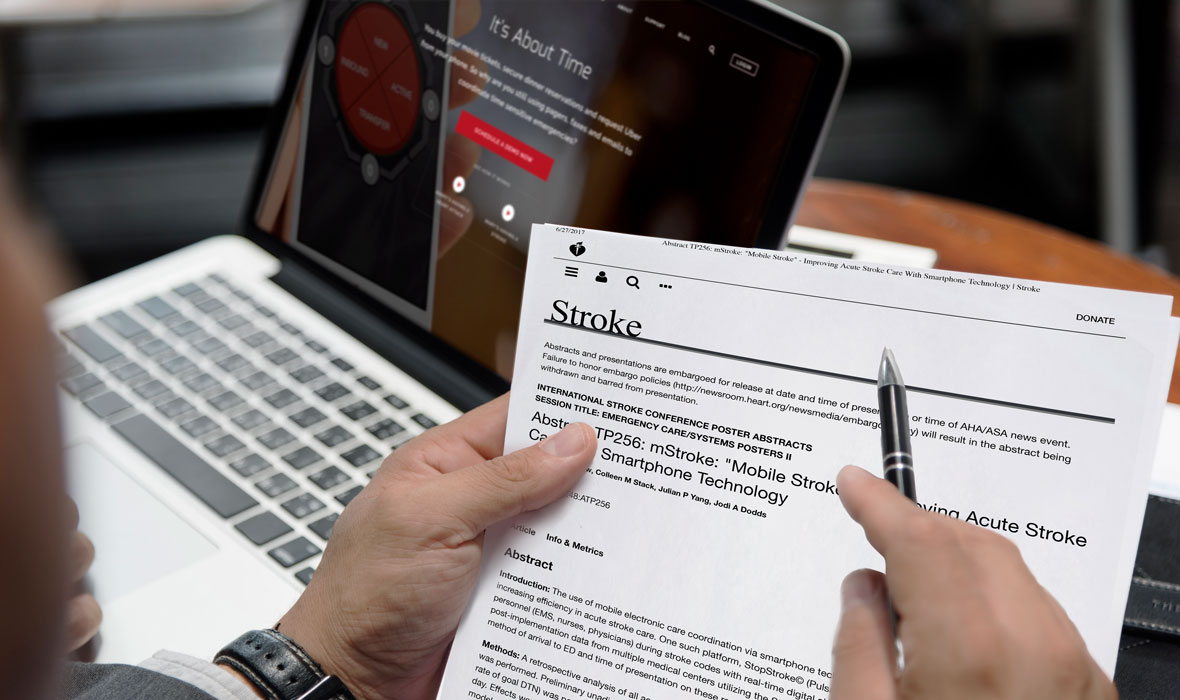For most, the words “MR CLEAN” evoke thoughts of the bald man on the bottle of your go-to household cleaner, but for those of us in stroke care, those words immediately take us back to the monumental ISC meeting of 2015 – where the clinical trials that forever changed the management of stroke patients were revealed.
While that conference will eternally be a tough act to follow, the meeting of the minds at ISC 2018 DAWNed yet another “New Day in Stroke Care.” Clinical trials such as Arise II, Extend-IA TNK, DEFUSE 3, and further results from DAWN were revealed, and to no surprise, are responsible for much of the research backing the new AHA/ASA 2018 Guidelines for Early Management of Acute Ischemic Stroke Patients.
So now that we’ve said goodbye to LA and ISC 2018, what did we learn? Lucky for you, we skimmed ALL 345 pages of the 2018 Guideline in order to bring you the most compelling additions and revisions:
- For select acute stroke patients within 6 to 16 hours of last known normal who have LVO in the anterior circulation and meet other DAWN or DEFUSE 3 eligibility criteria, mechanical thrombectomy is recommended.
- Systems should be established so that brain imaging studies can be performed within 20 minutes of arrival in the ED in at least 50% of patients who may be candidates for IV alteplase and/or mechanical thrombectomy.
- Multimodal CT and MRI, including perfusion imaging, should not delay administration of IV alteplase.
- For patients who otherwise meet criteria for EVT, it is reasonable to proceed with CTA if indicated in patients with suspected intracranial LVO before obtaining a serum creatinine concentration in patients without a history of renal impairment.
- Additional imaging beyond CT and CTA or MRI and magnetic resonance angiography (MRA) such as perfusion studies for selecting patients for mechanical thrombectomy in <6 hours is not recommended.
- Only the assessment of blood glucose must precede the initiation of IV alteplase in all patients. IV alteplase treatment should not be delayed while waiting for hematologic or coagulation testing if there is no reason to suspect an abnormal test.
- It may be reasonable to establish a secondary DTN time goal of achieving DTN times within 45 minutes in ≥50% of patients with AIS who were treated with IV alteplase.
- In selected patients with AIS within 6 to 24 hours of last known normal who have LVO in the anterior circulation, obtaining perfusion studies is recommended to aid in patient selection for mechanical thrombectomy, but only when imaging and other eligibility criteria from random controlled trials showing benefit are being strictly applied in selecting patients for mechanical thrombectomy.
- Patients age ≥18 years with a (1) NIHSS score of ≥6, (2) ASPECTS of ≥6, (3) prestroke mRS score of 0 to 1 and (4) causative occlusion of the internal carotid artery or MCA segment 1 should receive mechanical thrombectomy with a stent retriever IF treatment can be initiated within 6 hours of onset.
- In patients under consideration for mechanical thrombectomy, observation after IV alteplase to assess for clinical response should not be performed.
- In selected patients with AIS within 6 to 16 hours of last known normal who have LVO in the anterior circulation and meet other DAWN or DEFUSE 3 eligibility criteria, mechanical thrombectomy is recommended.
- In selected patients with AIS within 6 to 24 hours of last known normal who have LVO in the anterior circulation and meet other DAWN eligibility criteria, mechanical thrombectomy is reasonable.
- When several IV alteplase–capable hospital options exist within a defined geographic region, the benefit of bypassing the closest to bring the patient to one that offers a higher level of stroke care, including mechanical thrombectomy, is uncertain.
- Administration of IV alteplase guided by telestroke consultation for acute stroke patients may be as safe and as beneficial as that of stroke centers; and Telestroke networks may be reasonable for triaging acute stroke patients who may be eligible for interfacility transfer in order to be considered for acute mechanical thrombectomy.
- Participation in a stroke data repository is recommended to promote consistent adherence to current treatment guidelines, to allow continuous quality improvement, and to improve patient outcomes.
What are your thoughts on the latest guidelines? Let us know below!

 Brittany Means, RN, BSN
:
Feb 16, 2018
Brittany Means, RN, BSN
:
Feb 16, 2018



![[PRESS RELEASE] Published Research Finds Up to 31% Faster STEMI Treatment Times in Rural Hospital Setting with Pulsara](https://www.pulsara.com/hubfs/_1_website-page-blog-assets/pulsara-hosp-teams-assign-cardio-stemi-rn-1200x701.jpg)